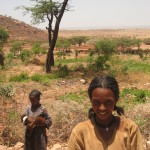 It was mid February on a Friday when my boss called me into her office for a very sudden one-on-one meeting. I’m sure you know the kind, they’re quite common these days and they always end with you not having a job. That’s right; I got laid off, another casualty of the “global economic crisisâ€.
It was mid February on a Friday when my boss called me into her office for a very sudden one-on-one meeting. I’m sure you know the kind, they’re quite common these days and they always end with you not having a job. That’s right; I got laid off, another casualty of the “global economic crisisâ€.
As I was sitting there on the train heading back to San Francisco in the middle of the day with my sad looking box of “office knickknacks†and a plant, alerting everyone on the train that I had just lost my job, it suddenly occurred to me what I needed to do.
I had been tossing the idea around in my head for quite some time but didn’t really think I would get the opportunity. I didn’t even really know if it could be done…but I guess that was the allure of it all. Two weeks later, there I was walking off the plane in Addis Ababa, the capital city of Ethiopia. All I had was a backpack full of cloths, a pocket full of cash, and 3 months to make it to the coast. The only thing I knew for sure about the area was that it was safe enough to be where I was. From there I would figure out the rest.
How does one backpack across East Africa? What is the transit like? What are the people like? Is it even safe to do? Like anyone in this situation, I had all the standard questions.
Ethiopia:Â Ingera, Famine, and Getting Back to Basics
Upon arriving in Addis Ababa I was pleasantly surprised. There was very little hassle from people when getting off the plane, and finding my way around the city via public transit was quicker than I had expected despite its disorderly appearance. “Addisâ€, as it’s commonly known, is your typical “developing-world city†with all the standard elements of traffic, congestion, pollution, noise, and livestock. But like other similar cities, despite its apparent chaos it still works. I suppose because it has to.
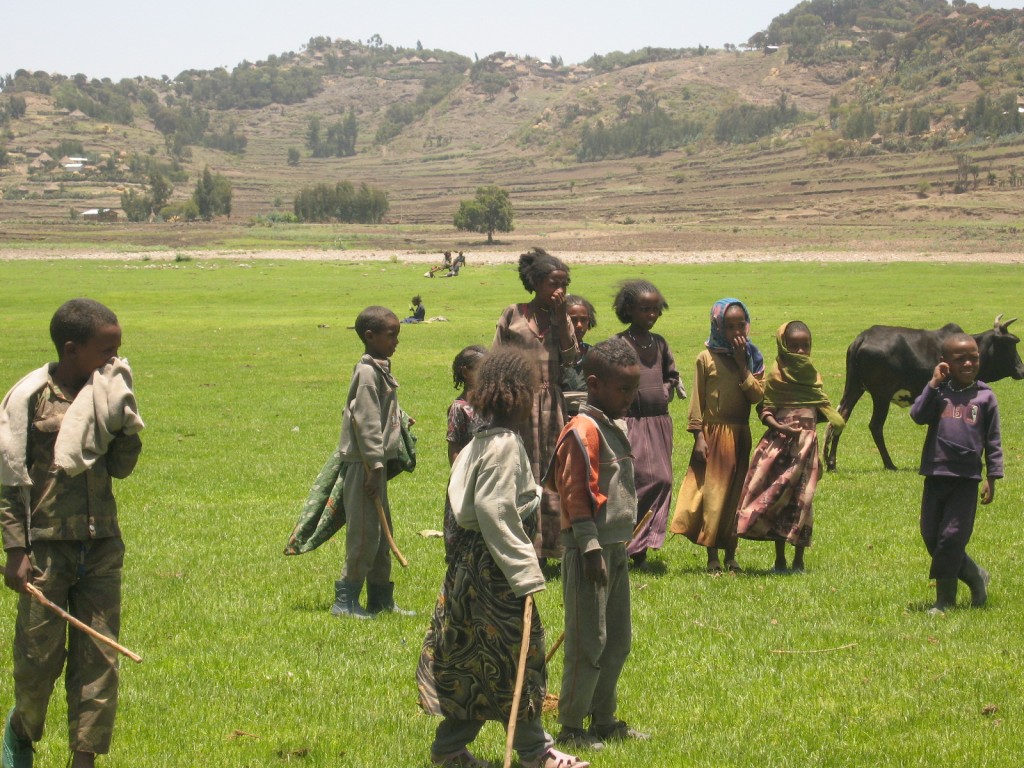 Within a few days I left Addis Ababa to head north through the country side via “Mattatuâ€, which is the standard means of transport in Africa (basically a mini van acting as a bus). From there I was able to make my way through the hot, dry peaks of the Simien Mountains, the ancient Christian monasteries carved out of lava rock, and the poverty stricken villages that still echo the famines of the past. In Ethiopia it’s no surprise that they constantly have to battle food shortages. They appear to live on the very fringes of agrarian civilization, tilling dry land with an ox and plow, no irrigation, a single harvest per year, and poor roads connecting their villages. If the rains don’t come, famine does.
Within a few days I left Addis Ababa to head north through the country side via “Mattatuâ€, which is the standard means of transport in Africa (basically a mini van acting as a bus). From there I was able to make my way through the hot, dry peaks of the Simien Mountains, the ancient Christian monasteries carved out of lava rock, and the poverty stricken villages that still echo the famines of the past. In Ethiopia it’s no surprise that they constantly have to battle food shortages. They appear to live on the very fringes of agrarian civilization, tilling dry land with an ox and plow, no irrigation, a single harvest per year, and poor roads connecting their villages. If the rains don’t come, famine does.
Ethiopia is definitely a unique place. Having never been colonized, it has its own language, calendar, time scheme, and cuisine (mostly ingera). But after about a month it was time for me to mosey along and go south to the “True Africaâ€. But to get there overland, I had to travel through North Kenya, also referred to as the “Wild West of Africaâ€.
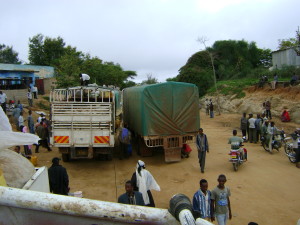
North Kenya: The Wild, Wild West
The journey south through North Kenya tends to be a more challenging one as there is no public transit, some of the worst roads on the continent, and a wave of tribal fighting that has plagued the region for years. Although that doesn’t mean that it can’t be done. You just need to do what the locals do when they need to get somewhere, and in this case it happens to be jumping on the back of a freight truck. So that’s exactly what I did.
I left the boarder town of Moyale comfortably perched atop of a mound of bean sacks heading towards civilization. On the first leg of the trip we traveled in convoy as you’re less likely to get high jacked by bandits if you are in large numbers. Although this makes the journey longer since coordinating anything in Africa is like pulling teeth.
For the second leg there were no convoys heading southbound so our next best option was the back of a pickup truck. The logic here is that we were less likely to get high jacked because we were less likely to be carrying a lot of valuables. Weather or not that’s the case, we made it out of the area just fine. However, I was in North Kenya for a total of about 3 days and in that time 8 people were killed in tribal clashes so it was with a sense of relief when I made it to the south. From there it was smooth sailing to Uganda.
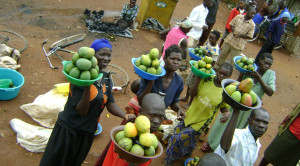
Uganda:Â The Pearl of Africa
Uganda is a country always associated with war, in fact their civil war ended less than 3 years ago. While traveling though this country you can see the remnants of its horrible past hiding just under the surface but for the most part you’ll be focused on the overwhelming friendliness of its people.
Uganda exits in two parts; the north and the south. The south tends to be a great place to travel though with lots to see while the north, recently controlled by a rebel faction called the Lords Resistance Army, is only slowing opening up to visitors. First north and then south, I traveled through the dense green fields of banana plants and giant avocados, I made my way to the scattered Crater Lakes area and then on to the resort town of Lake Bunyonyi for a little R&R. Uganda is a great place to visit on any budget, but Rwanda was up next, so off I went.
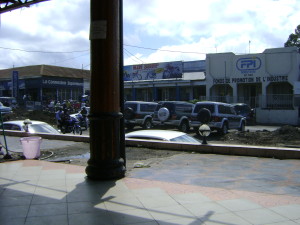
The Democratic Republic of the Congo: “Yeah, maybe you shouldn’t be hereâ€
As soon as I crossed the boarder into Rwanda I was tempted by the looming chaos just west in the Democratic Republic of the Congo. Its one of those places where nobody is really sure about what is going on and good information is hard to come by. But despite mixed reports on the safety of the region I decided to venture in…at least for a little while. I took a motor bike to the boarder and then crossed to the other side on foot. Within minutes of arriving, I was approached by an international aid worker who quickly reminded me that we were standing in the middle of a “war zoneâ€. His recommendation to me was that I make sure that I am on the other side of the boarder by dark; luckily that was my plan all along.
There was very little to see in the way of “tourist attractionsâ€, however it was definitely an interesting place none the less. An area once controlled by one of the many rebel groups operating in the area, it was buzzing with a UN and military presence. The streets were lined with barbed wire and armored vehicles cruised around in abundance. Above my head I would see helicopters or UN planes flying in and out of the area. The entire time I was on edge as I was in a place I knew I should not have been. But as the day came to a close I made my way back to Rwanda and back to “safe†territory.
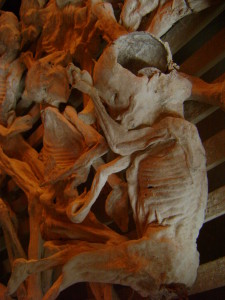
Rwanda: 15 Years Later…
Rwanda; now this is a strange place. Having gone through a genocide 15 years prior, the country seems to bear no scars of its brutal past…at least on the surface. Walking down the streets of Kigali it’s clear that money has been pumped into their economy, most likely due to the guilty conscience of the international community. In the major cities people enjoy many of the luxuries of the developed world but behind their emotionless faces they hide the events of their past. They all lived through it in some way or another and 15 years ago the streets of Kigali would have been lined with the bodies of thousands of Tutsi. Not an easy thing to erase from your memory.
Rwanda being a French speaking country and a bit more expensive than its neighbors, prompted me to leave fairly quickly and move on the west end of Tanzania. It was still a long way to the coast.
Tanzania: “I’m only using you for your beachesâ€
With an expensive visa fee and my cash on hand dwindling I needed to get to a major town quickly to avoid starving to death or having to sell myself for beans and ugali (local dish made of ground corn). This part of Tanzania sees very few tourists and the transit here is shoty at best but at least that means the prices were low and the people, genuine. I started on a motorcycle and finished on a bus, and didn’t stop for five days (except to sleep). The roads were rough and the bus drivers rougher. They would speed down the poorly maintained roads not slowing even the slightest bit for speed bumps or crossing traffic. Every time the bus met with a speed bump we would all fly out of our seats, getting at least a foot of air. So it came as no surprise that these buses would break down more than occasionally, each time being repaired right there on the side of the road with whatever was on hand.
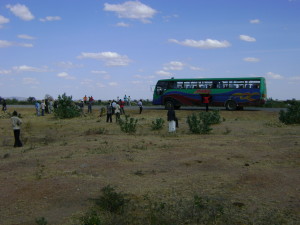 Upon reaching the east coast of Tanzania and the capital city of Dar es Salaam, an end was in sight and my final destination, in plain view. That destination being the beautiful white sand beaches of the Zanzibar Archipelago. All that stood in my way now was about 30 miles of ocean. To get there, I jumped on the standard commuter boat which is basically a cruise ship that behaves like a speed boat…jumping out of the water, tilting from side to side, and scaring the sh*t out of me the entire time. These fears were made a reality when I found out upon arrival that 40 people had drowned earlier that day when one of these boats had tipped over. During the next few days a large group of concerned residents watched carefully as officials tried to retrieve the bodies of the victims.
Upon reaching the east coast of Tanzania and the capital city of Dar es Salaam, an end was in sight and my final destination, in plain view. That destination being the beautiful white sand beaches of the Zanzibar Archipelago. All that stood in my way now was about 30 miles of ocean. To get there, I jumped on the standard commuter boat which is basically a cruise ship that behaves like a speed boat…jumping out of the water, tilting from side to side, and scaring the sh*t out of me the entire time. These fears were made a reality when I found out upon arrival that 40 people had drowned earlier that day when one of these boats had tipped over. During the next few days a large group of concerned residents watched carefully as officials tried to retrieve the bodies of the victims.
Zanzibar:Â The Spice Islands
Away from the chaos and surrounded by palm trees dangled over turquoise water, I was finally able to relax. Dhow boats sailed across the horizon as the smell of camp fires filled the air in preparation for that nights “full moon partyâ€.
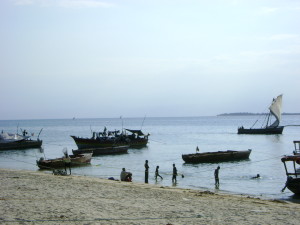 Overland from Ethiopia, I had reached the Zanzibar Archipelago, the eastern edge of Africa and to many, the quintessential image of “paradiseâ€. Here, my journey had come to an end and there’s no better way to conclude a trip through Africa than with fresh fish, local brew, and the ever-so-ambitious goal of wasting away your days on the Spice Islands.
Overland from Ethiopia, I had reached the Zanzibar Archipelago, the eastern edge of Africa and to many, the quintessential image of “paradiseâ€. Here, my journey had come to an end and there’s no better way to conclude a trip through Africa than with fresh fish, local brew, and the ever-so-ambitious goal of wasting away your days on the Spice Islands.

